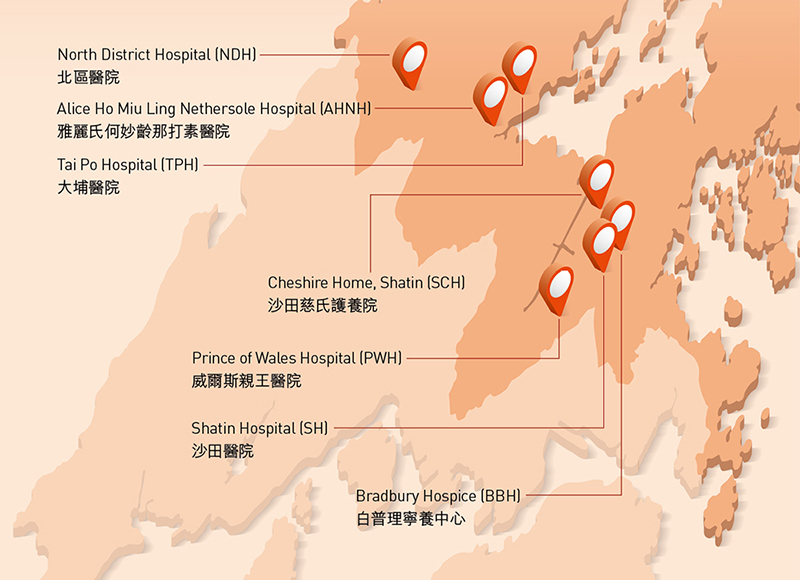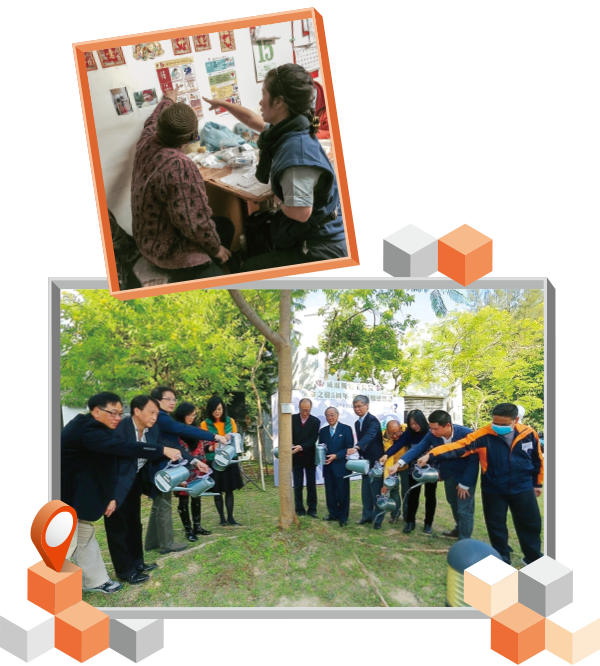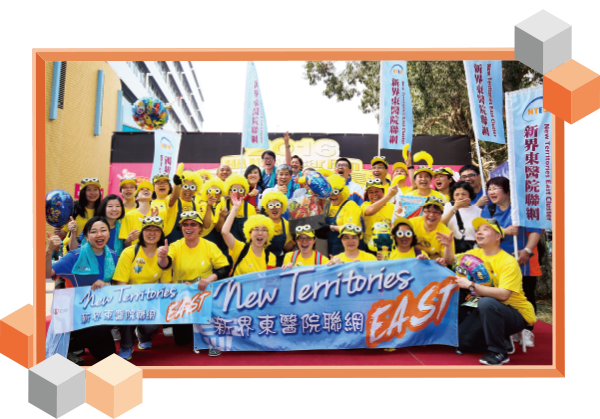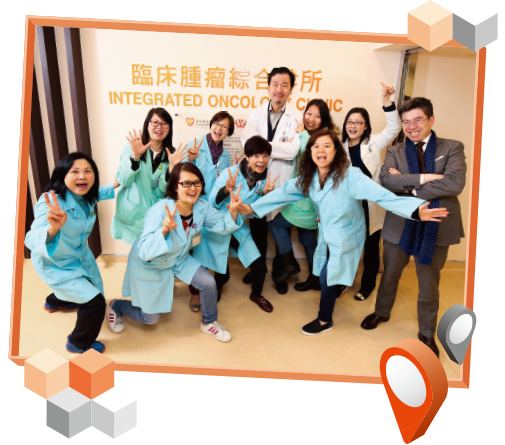New Territories East Cluster (NTEC)

| Number of general outpatient clinics | 10 |
| Throughput | |
| Number of beds | 4,651 |
| Patient discharges* | 280,277 |
| A&E attendances | 385,614 |
| Specialist outpatient attendances (clinical) | 1,141,679 |
| General outpatient attendances | 963,338 |
| Full-time equivalent staff | 11,484 |
* Total inpatient, day patient discharges and deaths
NTEC made ongoing efforts to rein in the acute demand for medical services in 2015-16. External factors including large catchment area, ageing population and the medical needs of cross-border population have been affecting NTEC. Shortage of medical, nursing and allied health staff further exacerbated the situation which exerted considerable pressure on healthcare services.
Facing difficult situation of supply and demand imbalance in healthcare services in Hong Kong, NTEC remained steadfast in increasing service capacity to overcome escalating service demand. In responding to the shortage of hospital beds, NTEC opened 36 day beds and 35 acute beds, including four surgical High Dependency Unit beds and one Intensive Care Unit bed. With that, access block with patients waiting for admission to wards could be alleviated. Additional support sessions were arranged to handle Triage IV (semi-urgent) and V (non-urgent) cases to relieve overwhelming caseload in A&E Departments in the Cluster. To enhance service accessibility, a joint replacement centre was established to perform additional joint replacement surgeries, and an additional MRI machine for conducting more investigations with radiological imaging services was installed. Three general anaesthetic operating theatre sessions for cancer surgery were also added to shorten the waiting list for operations. With a view to strengthening support to the community, episodic quota of the Cluster’s general outpatient clinics was increased to improve the access to primary care services. Besides, service of the Community Geriatric Assessment Team was stepped up to provide additional outreach attendances for terminally ill residents living in residential care homes for the elderly.

On ensuring service quality and safety, NTEC modernised the management of cancer patients requiring targeted therapies through the provision of additional molecular tests. More laboratory tests for patients with growth hormone abnormalities were also provided through the adoption of Mass Spectrometry Serum IGF – I Assay. Besides, minimally invasive surgery technique was applied in 80% of hysterectomy surgeries for suitable gynaecological patients. Human capital on genetic and genomic analysis of HA was built up through knowledge and skill transfer and collaboration between academia and the Cluster.
NTEC also paid great attention to allaying staff shortage and high turnover. More supporting staff members were hired to share out simple clinical tasks and clerical workload of allied health professionals. Additional nurses were recruited to relieve the workload in hospital wards. More allied health professionals were also in post to enhance multi-disciplinary support for patients.


